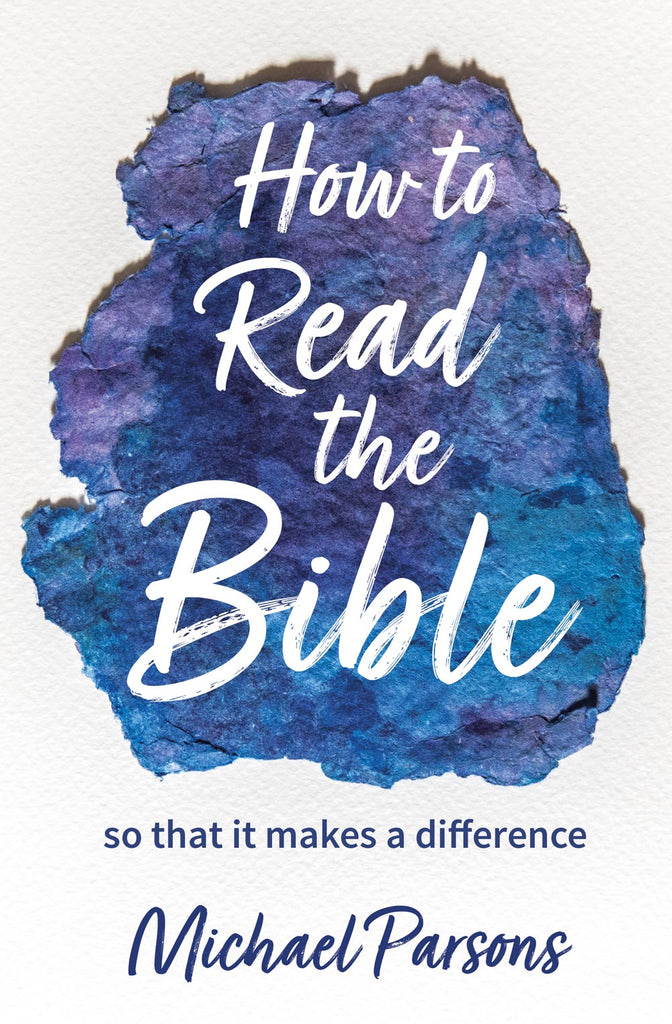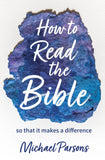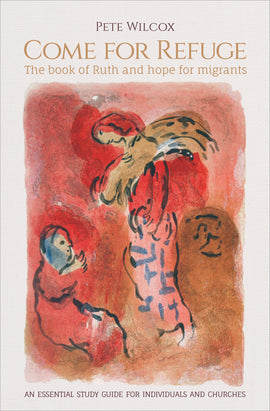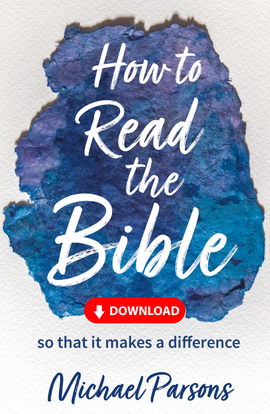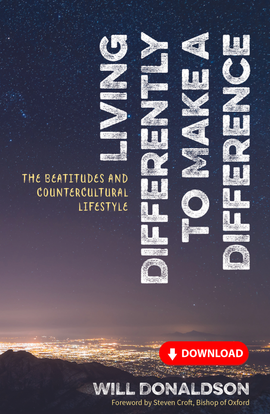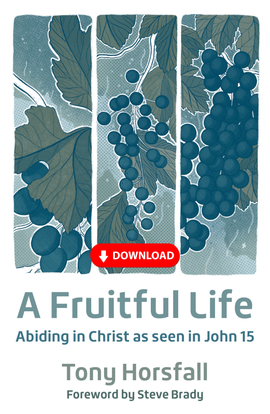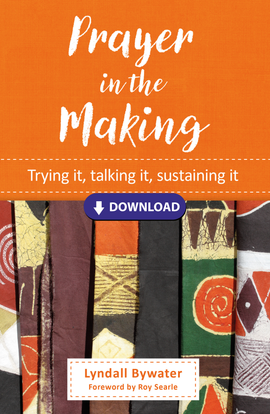How to Read the Bible... so that it makes a difference
How to read the Bible’s story so that it makes a difference
To read and engage with the Bible, we first need to understand the story, the styles of writing and the approaches we find in the text. Michael Parsons encourages readers to look at the whole biblical storyline before demonstrating ways of approaching individual texts. Topics along the way include understanding different genres, the importance of narrative, imaginative reading, praying the Bible, difficult passages and what to do with them, and how to apply scripture to our own lives.
Digital Product - This title is now out of print but is still available digitally. Please click the button below to buy on Kindle or click below to visit our eBooks collection to buy this product for your smartphone and/or tablet. - Go to eBooks
| Title | How to Read the Bible... so that it makes a difference |
| Author | Michael Parsons |
| ISBN | |
| Description | To read and engage with the Bible, we first need to understand the story, the styles of writing and the approaches we find in the text. Michael Parsons encourages readers to look at the whole biblical storyline before demonstrating ways of approaching individual texts. Topics along the way include understanding different genres, the importance of narrative, imaginative reading, praying the Bible, difficult passages and what to do with them, and how to apply scripture to our own lives. |
| Details |
|
To read and engage with the Bible, we first need to understand the story, the styles of writing and the approaches we find in the text. Michael Parsons encourages readers to look at the whole biblical storyline before demonstrating ways of approaching individual texts. Topics along the way include understanding different genres, the importance of narrative, imaginative reading, praying the Bible, difficult passages and what to do with them, and how to apply scripture to our own lives.
Michael Parsons is Minister for Discipleship at Lechlade Baptist Church and has previously been a theology lecturer in the UK and Australia, and commissioning editor for Paternoster and The Bible Reading Fellowship. He is the author of books on the Reformation and an Associate Research Fellow at Spurgeon’s College, London.
‘Michael Parsons is passionate about the Bible – and it shows! He is also passionate about helping people engage with the Bible in ways that draw them into personal and transformative encounters with the God revealed in its pages. This book is bursting with resources to help us understand what the Bible is, how to read and study it for ourselves, and how to know God better as we do so; it is a richly rewarded read!’
Mags Duggan, author and speaker
Transforming Ministry, September 2020. Review by Veronica Bright
‘We read scripture to hear God speak to us, to relate to us in and through Christ.’ The author emphasises engaging with the text, rather than merely reading it, and he sets out to explain and demonstrate how his readers may do this, in a number of different ways. He offers exercises at chapter ends, so that individuals or groups may further their experience of the topic presented. As a writer I found the chapter on poetic language interesting. We are so used to imagery in the novels we read now, but when the psalmist uses imagery, for example, it would probably have been the first time a phrase or word was used creatively. Parsons is an experienced minister and theology lecturer, and he writes clearly and encouragingly. Sometimes I feel he leads readers towards his own viewpoint, rather than guiding them to form their own. The concluding chapter in the book considers the reasons we want to be biblically literate. By the end I was conscious that behind each book in the Bible there is a writer, and beside each writer there is God.
Review by Veronica Bright
Touchstone, the monthly newspaper of the Methodist Church of New Zealand, July 2020. Review by John Meredith
The intention of the book is to help readers who want to read the Bible with comprehension and application to life today. In this, it achieves its aim. Readers are invited to be prepared to think things through as they read and to try out the strategies the author suggests.
The book is presented in four parts:
First, the foundation for reading the Bible today. Rather than every word being dictated by God, the Bible has come to us through human authors and editors all of whom were seeking to convey their experience of God as a presence in the midst of life. Through their words we may hear God speaking as one who addresses us in the life of our day. As we listen we discover that the Bible has a voice directed to us. God speaks to those who read the Bible in this way.
Second, macro strategies: how to read the narratives. It may be argued that the major coordinates shaping the whole Bible are creation, the fall, redemption and the new creation. We are pulled into these narratives as we read and listen. The Bible does not give us definitive answers on issues such as divorce, nuclear war, use of the internet, gay rights or animal testing. As we engage with God’s word, however, we learn to respond in ways that are consistent with God’s character.
Third, micro strategies: how to read the text. This section includes a number of helpful exercises for reading imaginatively and reflectively. While we will find in the Bible expressions of God’s judgement the author stresses how we should always be looking for hints of God’s grace even if this means questioning a text as we read. Each of the ten chapters in part three ends with an exercise where readers are invited to put into practice the steps for reading specific texts.
Four, things to take into account that will inform thoughtful engagement with the text. The chapters in this section also include practical exercises. The author directs attention to the words in the text, the writer’s emotions, the literary devices used by writers, how to regard long and tedious lists of names and details and the way the gospels present Jesus and invite us to respond to him within the context of our own lives.
The book ends by asking why read the Bible? In summary, reading the Bible is an essential aspect of worship, from the Bible we learn about the grace and mercy of God, especially of God’s love in Jesus Christ, it offers strength and hope for the most trying circumstances and inspires us to act with Spirit-filled justice and compassion.
How to Read the Bible presents a scholarly approach in a non-threatening way. The practical exercises suggested are an invaluable resource for those who wish to improve their biblical literacy. It is especially recommended for group study.
Reviewed by John Meredith, editor of Word & Worship the quarterly publication of the New Zealand Lay Preachers Association
Reviewed by Richard Frost
Being a Minister for Discipleship at Lechlade Baptist Church, former theology lecturer both here and in Australia and former Commissioning Editor at BRF, Michael Parsons knows what he’s talking about. From rigorous analysis to comparing life as a Christian with shooting ‘the rapids’ at Centre Parcs, in this book he explores a heady mixture of practical, Biblical insights and academic theology in a readable, usable and at times challenging way.
Initially considering what he calls ‘macro’ strategies of how to read and understand the Bible, he offers practical ways of exploring these for ourselves either alone or in groups. The book then moves from the academic to the practical by considering a variety of ‘micro’ strategies such as Ignatian imagination-based meditation and variations of lectio divina (spiritual reading) through to engaging with the narrative by focusing on specific sentences or verses and how that enriches our understanding - and how the Bible itself encourages us to ‘turn being in to doing’. Final sections consider the poetic language of the Bible, its use of rhetoric and repetition, and the more difficult and, to be frank, boring bits that these scriptures contain.
‘The Bible, then, is a post-fall witness to God’s revelation of himself, of his presence, intentions and historical activity,’ Michael Parsons writes. ‘The Bible is a continuing, written witness to how the Lord has revealed himself to the world.
‘If the authors of the biblical books find it terribly difficult – nearly impossible – to describe the God who speaks to them, then on reading scripture we shouldn’t be dismayed that we sometimes can’t picture what they are saying to us. If they struggled with the original revelation, how much more will we with the imperfect representation of it?’
The plethora of approaches to reading the Bible that are explored in this book is helpful and, lest it becomes overwhelming, each reader will need to determine for themselves which method may or may not work for them. Helpful to that is the way each chapter finishes with some suggestions about how to put the ‘strategy’ as Michael Parsons calls them, in to practice for oneself.
This is a book to take one’s time over and the learning will be all the richer for that.
Richard Frost is the author of Life with St Benedict and writes a blog at workrestpray.com

